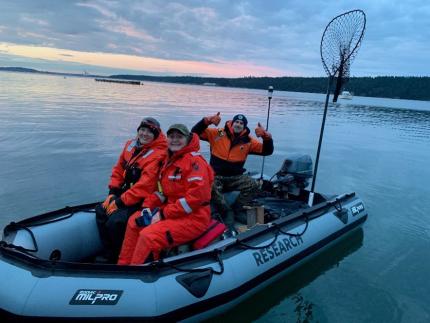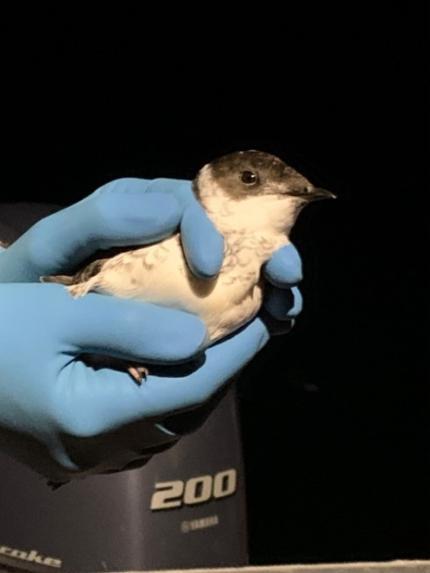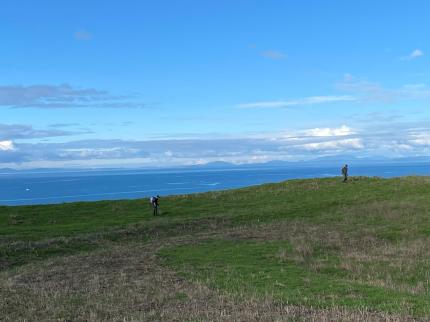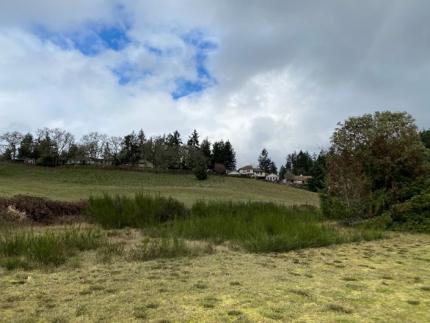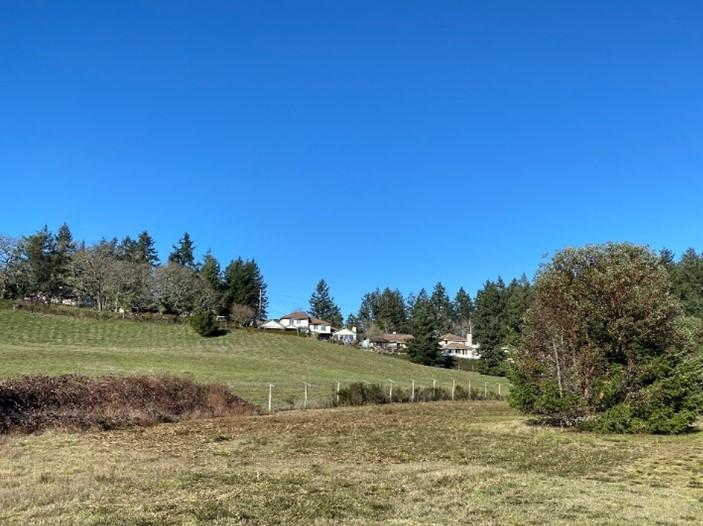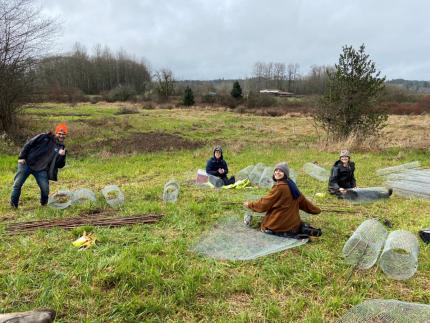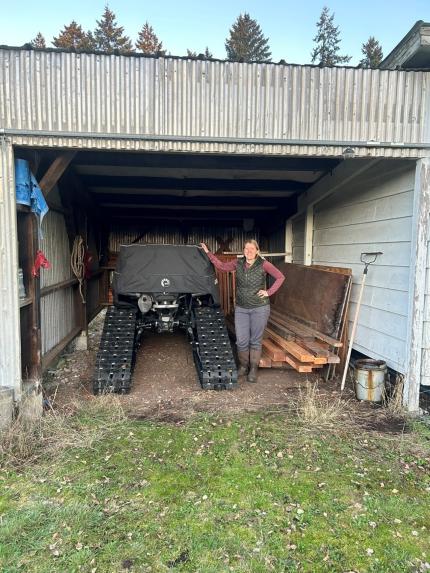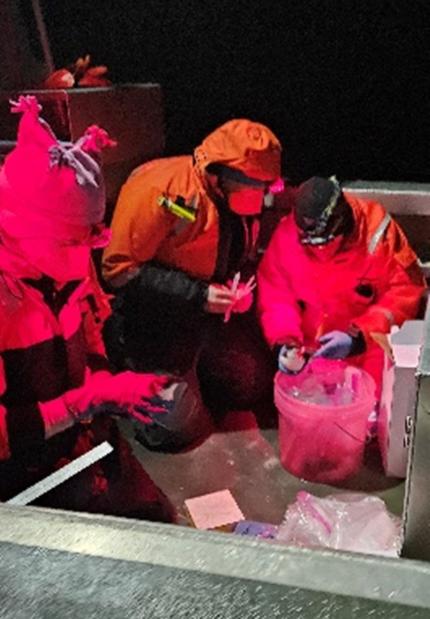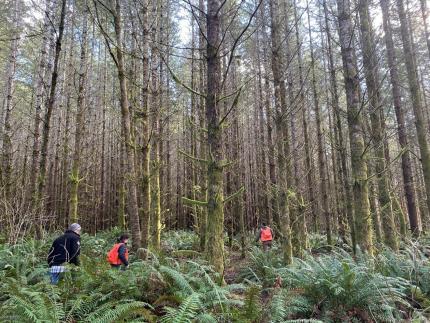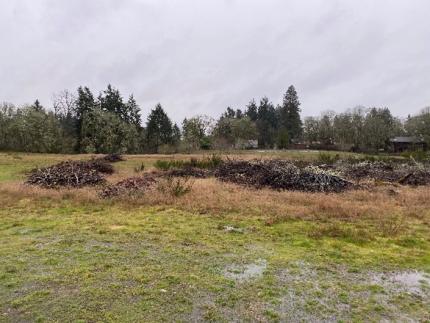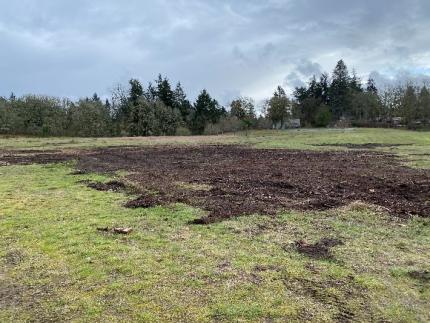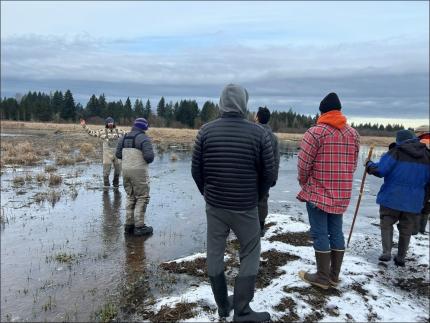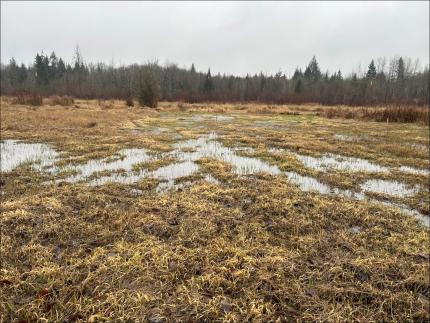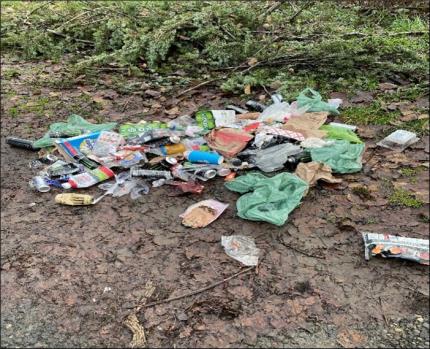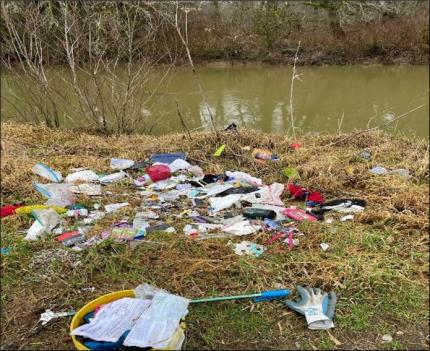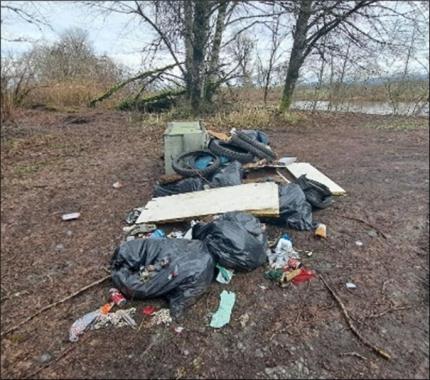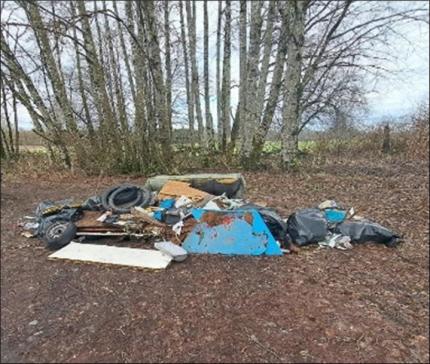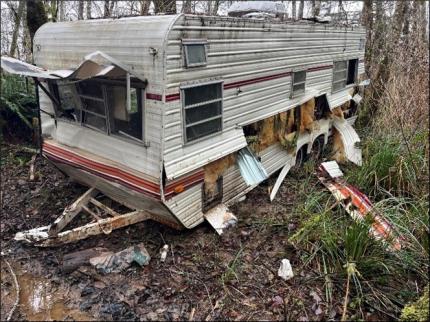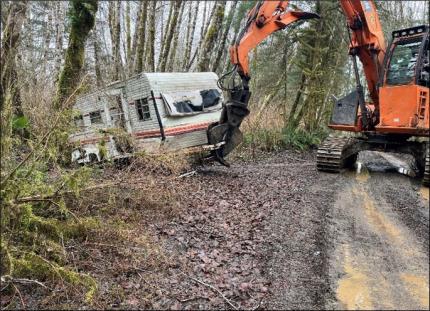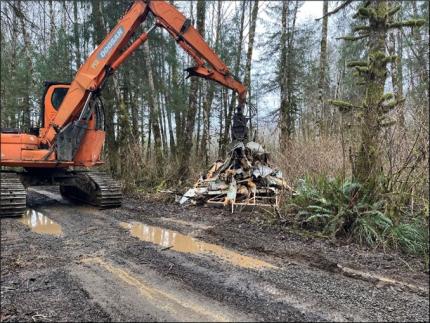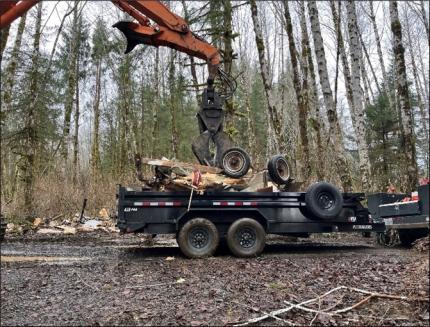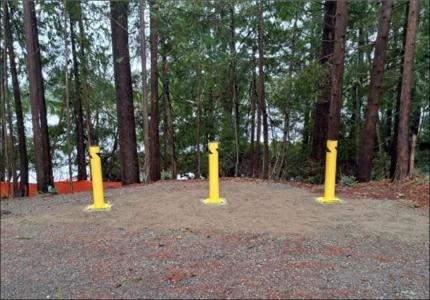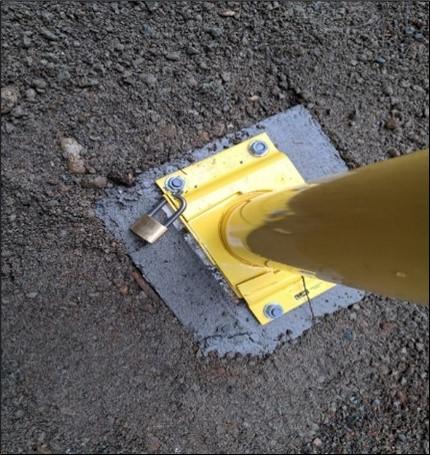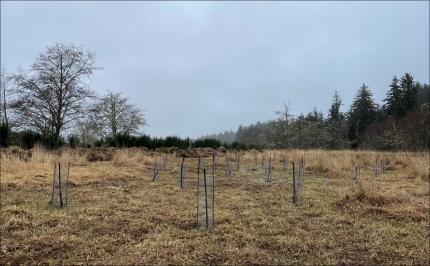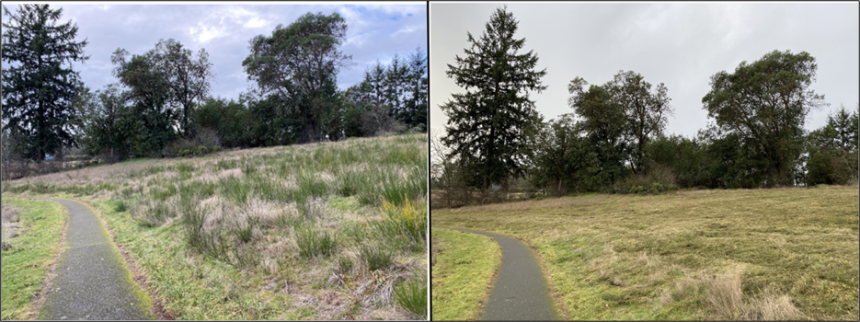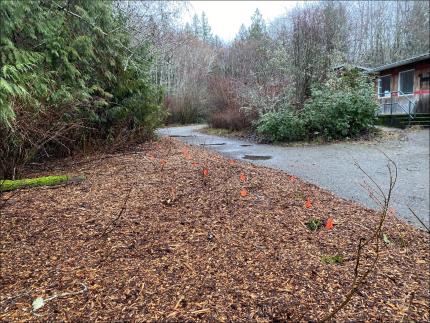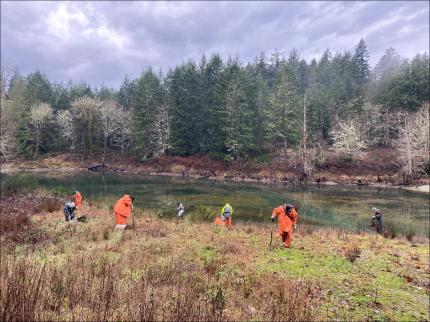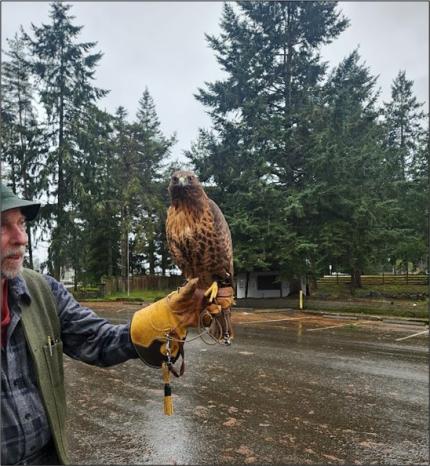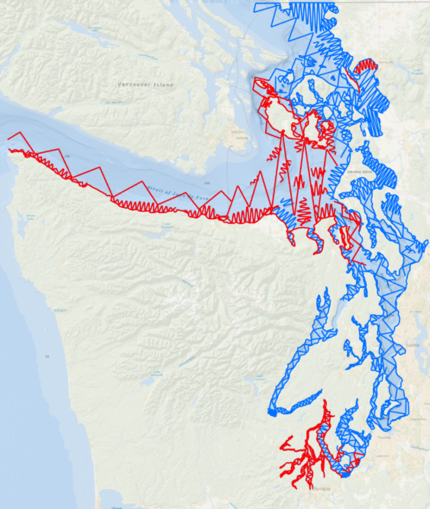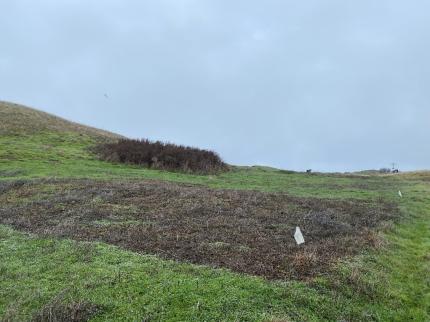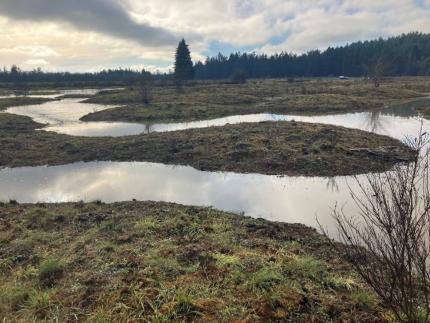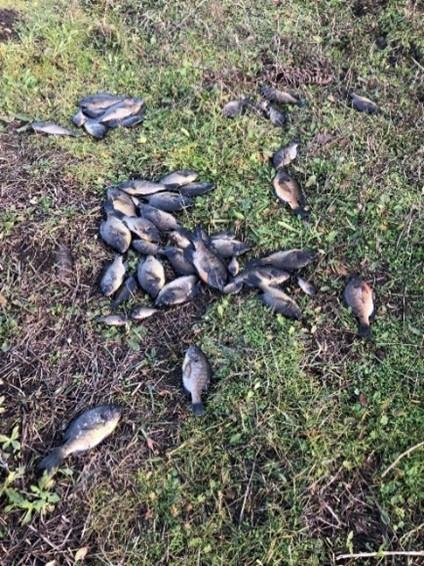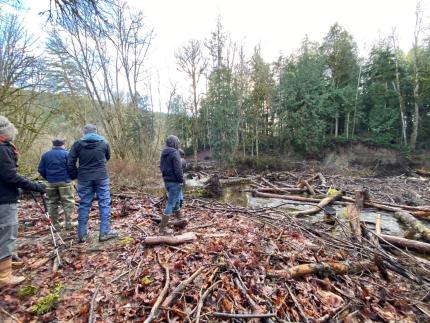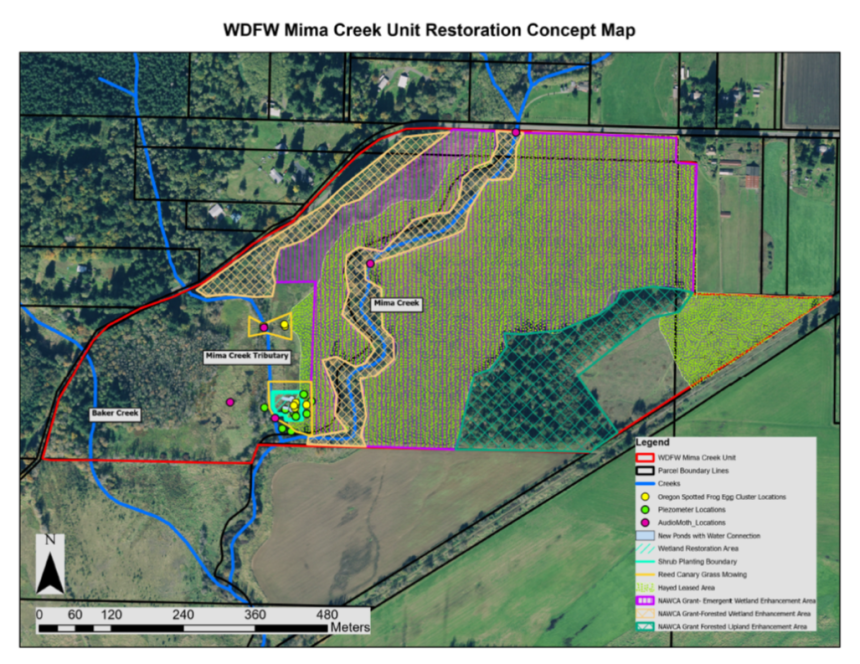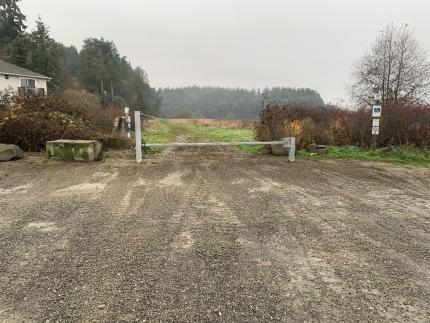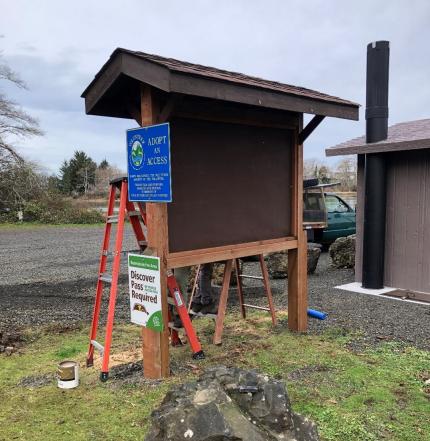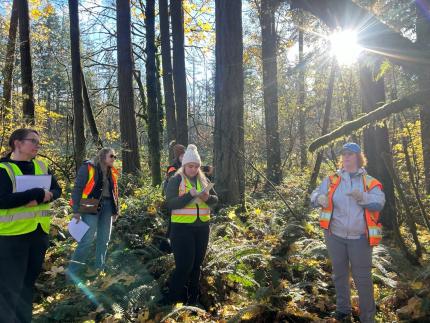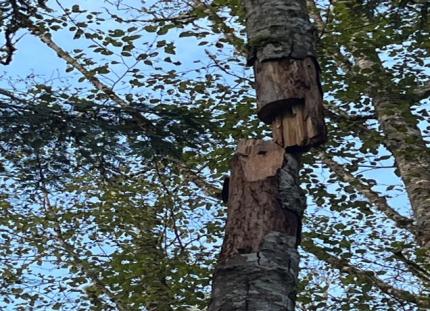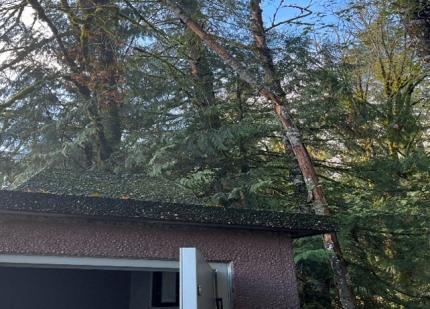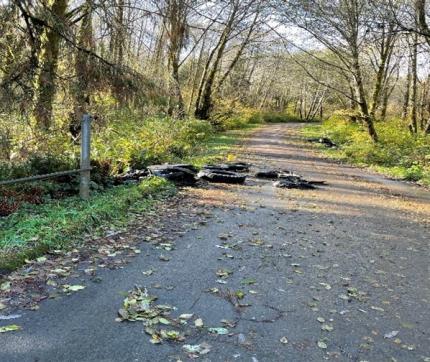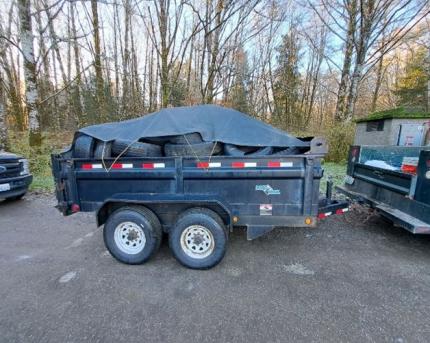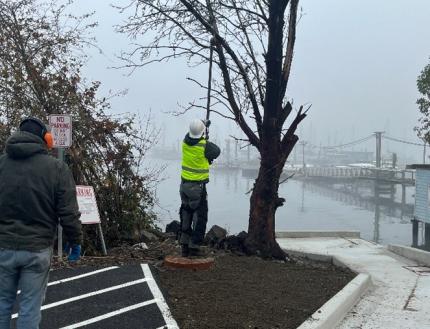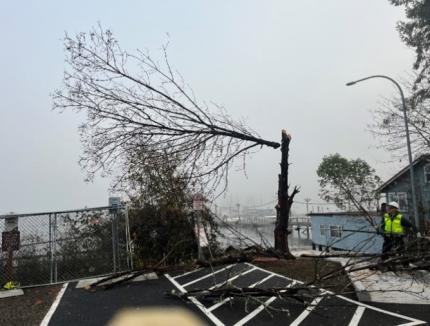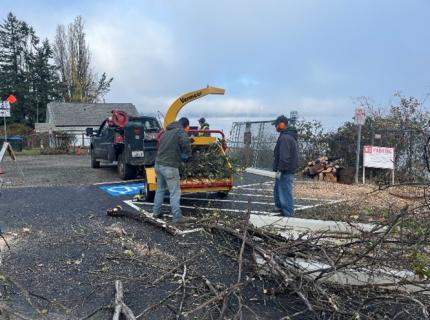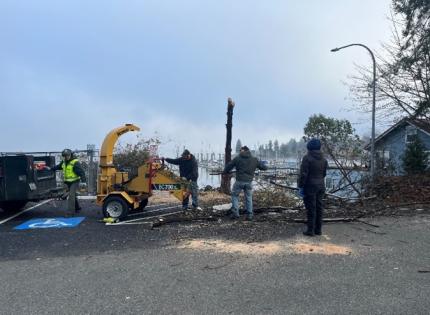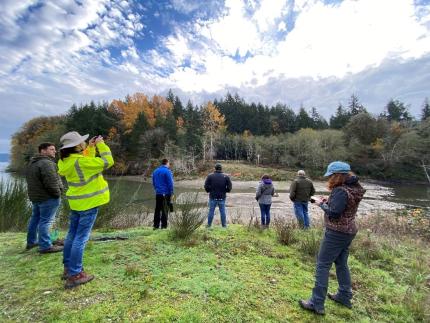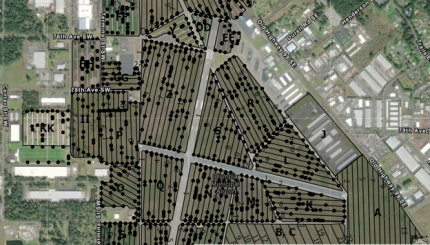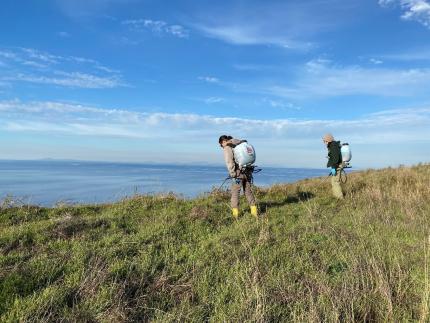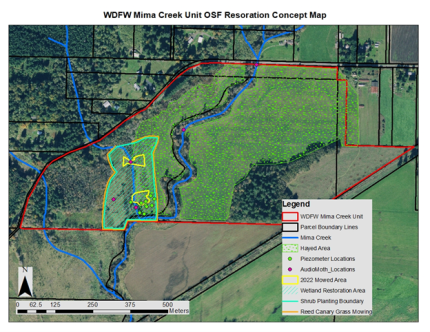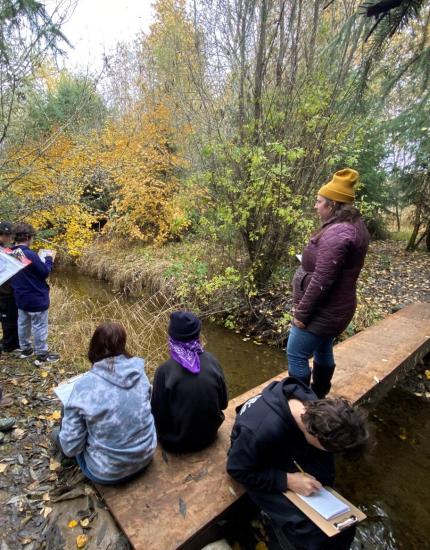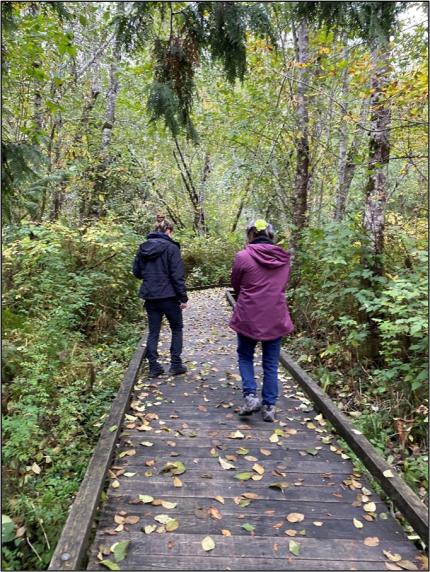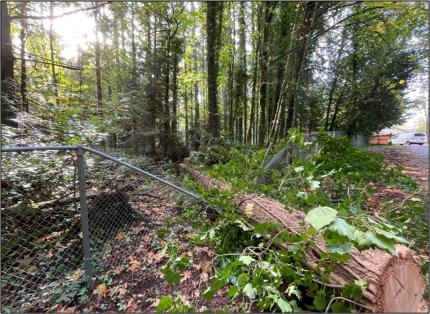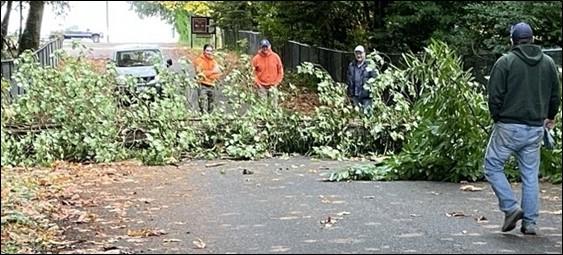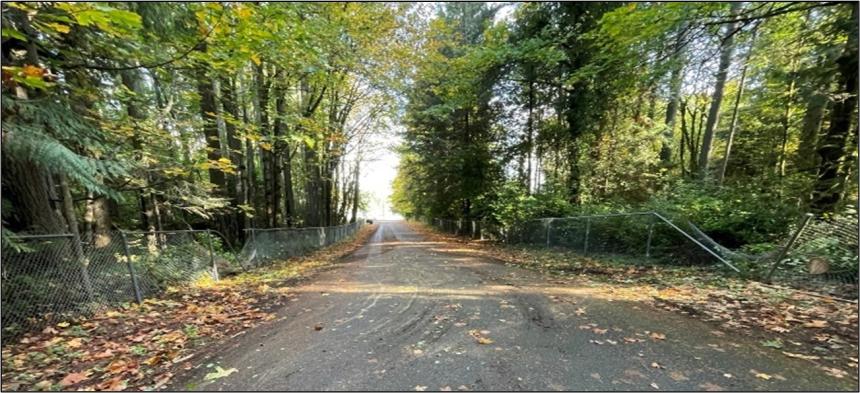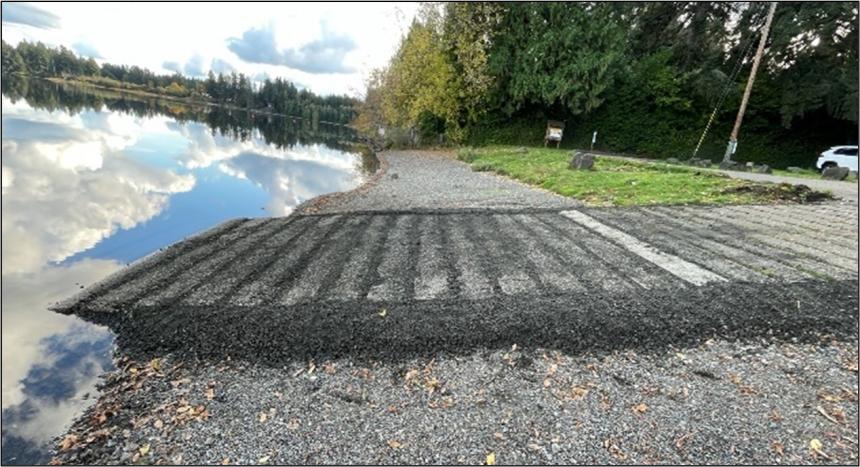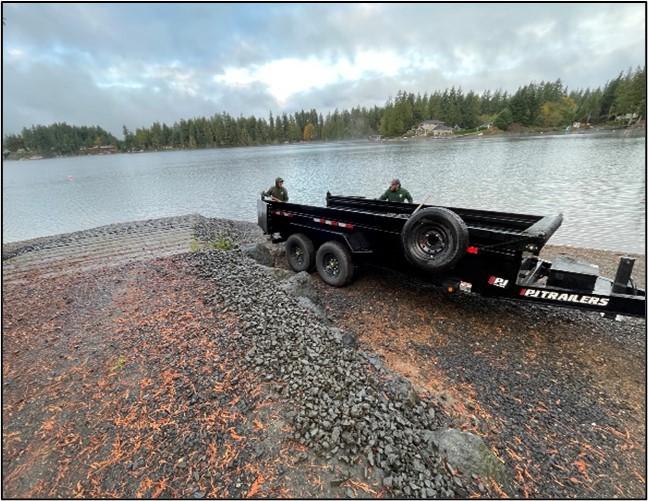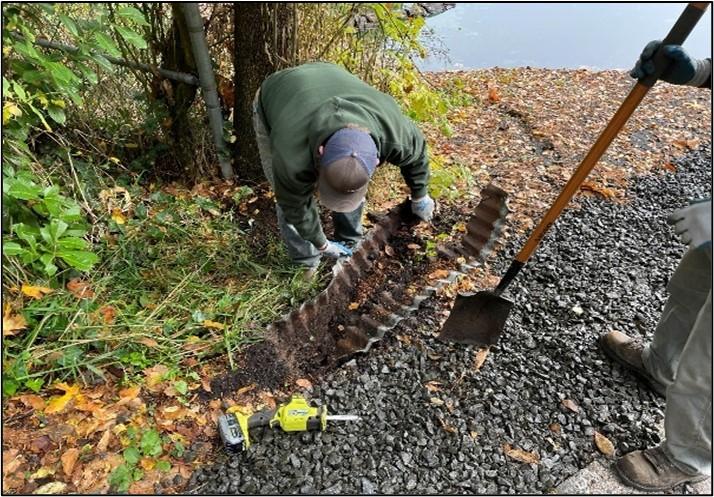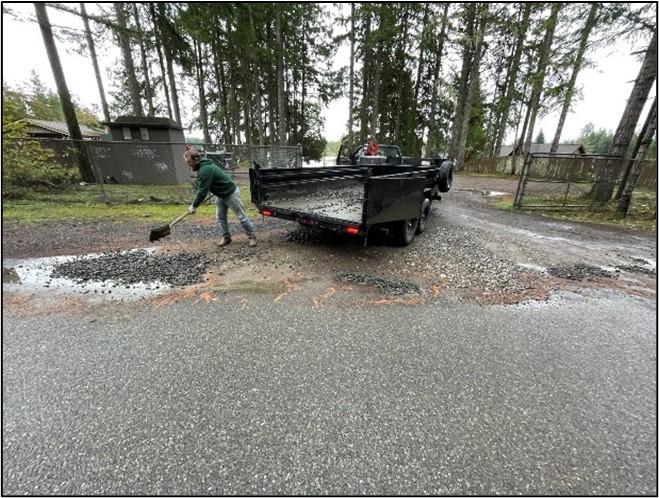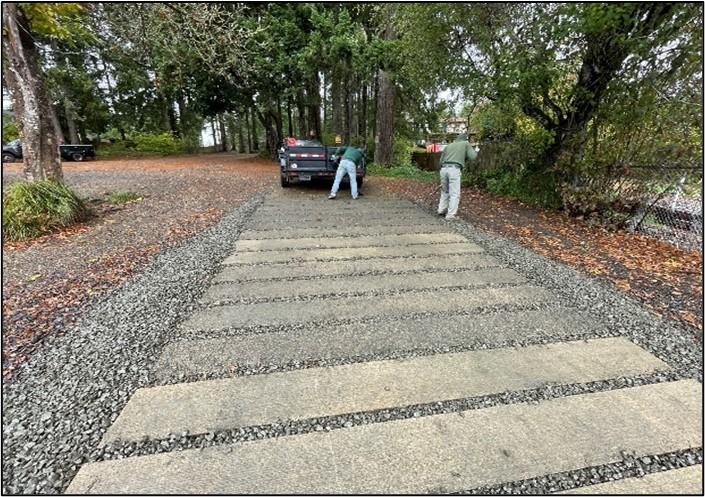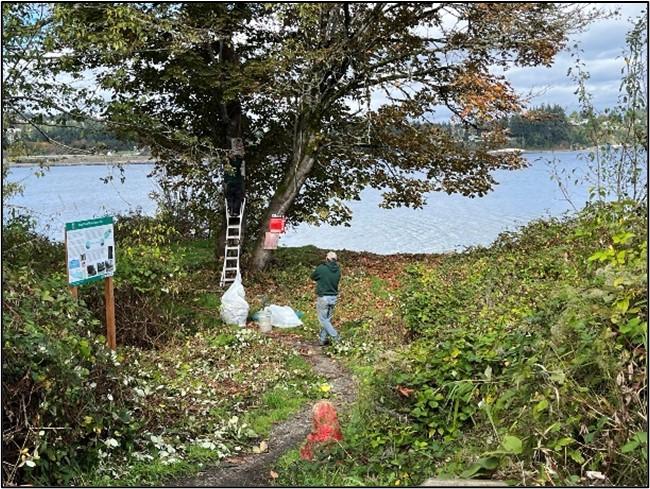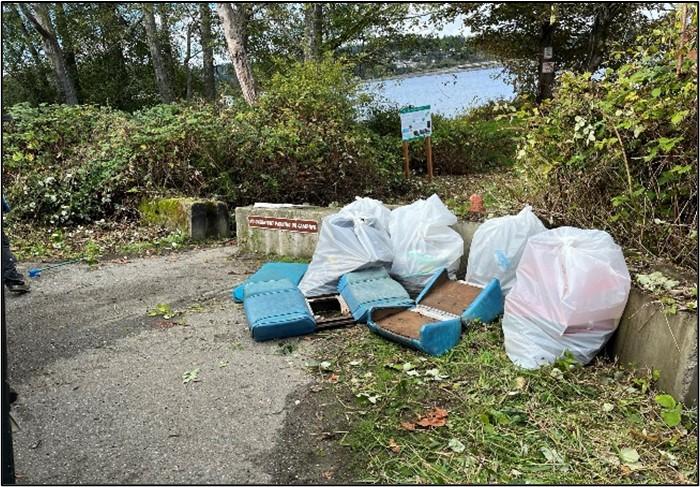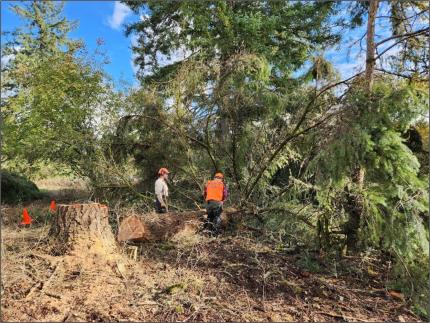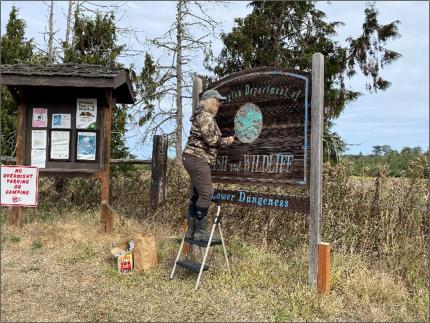Biweekly report May16-31 2024 - Region 6 (Coastal)
Managing Wildlife Populations
Grouse Surveys: Biologist Murphie conducted sooty grouse survey work along four routes in District 15. Biologists Novack and Cent, along with Technician Martinez, established transect lines and completed surveys for sooty grouse in District 17.
Taylor’s Checkerspot Surveys: Biologist Murphie participated in activities related to Taylor’s checkerspot butterfly surveys in District 16.
Western Pond Turtle: Biologist Murphie conducted work related to western pond turtle recovery at the site he manages in District 15.
Deer and Elk: Biologist Murphie participated in fawn and calf collaring activities related to research being conducted by the Makah Tribe in District 16.
Marbled Murrelet: Biologist Murphie participated in marbled murrelet capture activities related to research being conducted by the Washington Department of Fish and Wildlife (WDFW) Marine Bird Research Section related to marbled murrelet diet.
Bats: Biologist Murphie participated in bat capture activities in the Hamma Hamma area as part of a white-nose syndrome surveillance effort.
Snowy Plovers: Biologist Cent led efforts to conduct the range-wide breeding survey for western snowy plovers. Biologist Novack assisted, along with Wildlife Area Technicians Martinez and Magliaro, and an assortment of Diversity Division staff members, U. S. Fish and Wildlife Service Biologist Ritchie, Shoalwater Biologist Sundstrom, and EcoStudies Technician Marty. All sites were surveyed, and the overall numbers seemed robust compared to last year.
Biologist Cent continues to assist with plover nest searches and chick banding. A pair of chicks were captured and banded at Copalis Spit. These are the first plovers banded in Washington in many years.
Streaked Horned Lark: Biologist Cent surveyed the Shelton Airport for streaked horned larks. Only one bird was seen.
Band-Tailed Pigeon: Biologist Novack, along with Section Manager Spragens and Biologist Behling, conducted captures of band-tailed pigeons in the Kala Point neighborhood near Port Townsend. A dozen birds were captured and banded. Five of those birds were fitted with Ornitela brand transmitters that will allow the agency to track their movements and help identify new mineral sites. Thanks to various members of the neighborhood housing association for allowing access to their properties.
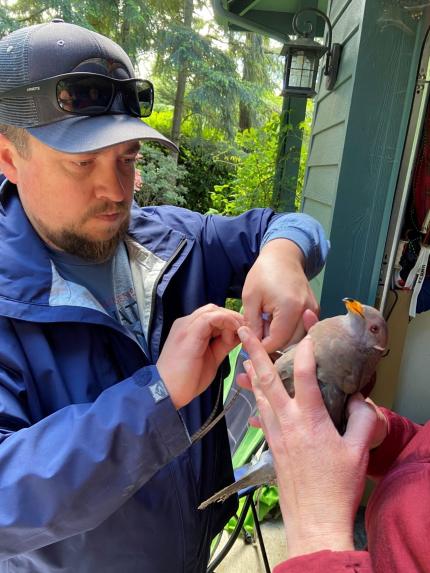
Conserving Natural Landscapes
Wildlife Area Maintenance: Technician Norris maintained vegetation around the parking areas at the Dungeness and Chimacum units of the North Olympic Wildlife Area.
South Puget Sound Spring Work Party: The Clover Park Rotary Club hosted their biannual work party at the South Puget Sound Unit in Lakewood. They had over 50 volunteers out to help pull weeds, plant native plants, and clean up trash.
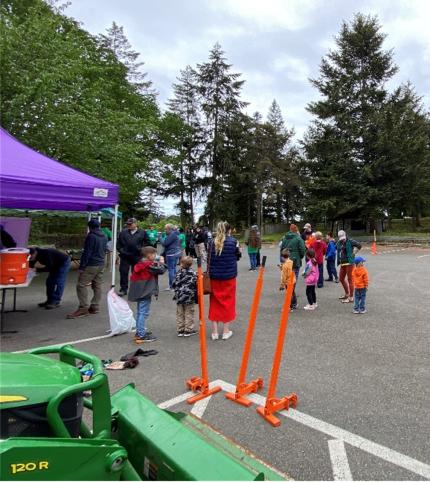
Protection Island Restoration: Technician Norris and Wildlife Area Manager Laushman visited the Zella Schultz Unit on Protection Island. They treated invasive mustards and thistle.
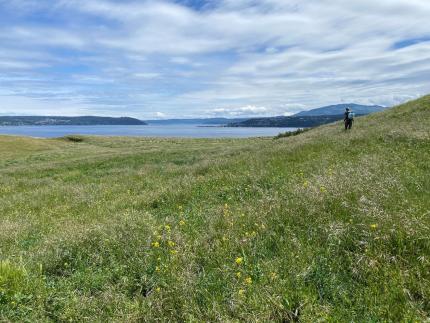
Recreation and Conservation Office (RCO) Grant: Biologist Novack presented an RCO-Riparian Grant application to RCO tech reviews. The committee provided some feedback on how to improve the application.
Providing Education and Outreach
General Wildlife Inquiries: Biologist Murphie responded to inquiries received by phone or email related to hunting seasons and pamphlets, bats, and river otters.
Theler Wetlands: Wildlife Area Manager Laushman met with staff members from the Hood Canal Salmon Enhancement Group (HCSEG) and Washington Department of Fish and Wildlife Communications and Public Engagement (CAPE) Program to discuss the next steps with the Theler Exhibit Hall recently acquired by WDFW at the Union River Wildlife Area in Belfair. Washington Department of Fish and Wildlife and HCSEG are working together to get the exhibit hall ready for public use again and are also working on estuary restoration and trail restoration work at the unit.
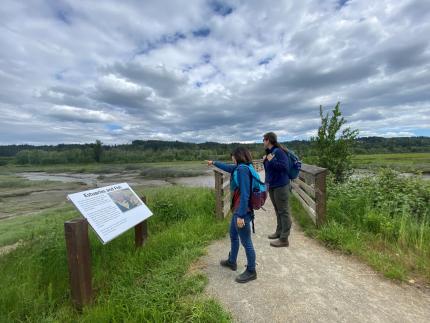
Conducting Business Operations and Policy
Diversity Grant: Biologist Novack and Cent reviewed applications for funding by the Diversity Division and submitted their evaluation scores.
Diversity Technician Hiring: The process is continuing to hire diversity technicians that will work in Region 6.
